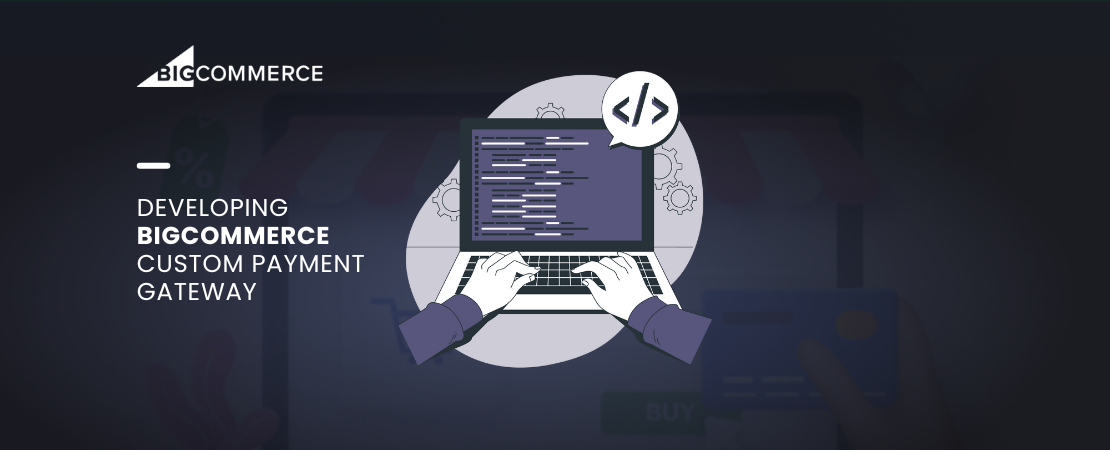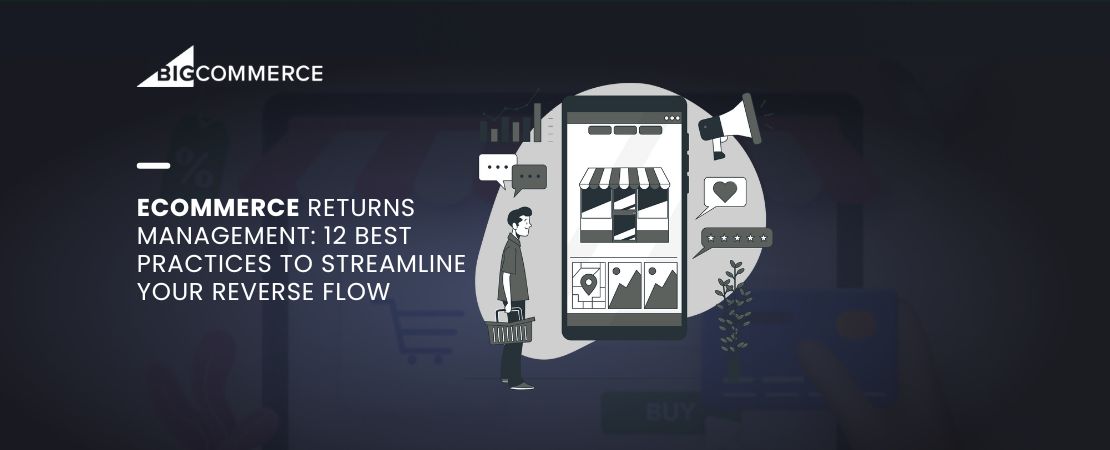When it comes to eCommerce platforms, Magento has been a popular choice for many online businesses. However, as your business grows and evolves, and you want to spend less on upgrades and security patches, you may find that Magento no longer meets your needs. This is where BigCommerce comes in. BigCommerce is a cloud-based eCommerce platform that offers a range of features and benefits that can help take your business to the next level. In this blog post, we will guide you through the process of migrating from Magento to BigCommerce.
Before going into further details, you must know why you need a Magento to BigCommerce migration.
When making decisions about their store’s tech stack, merchants tend to base their technology decisions on what can help to scale their business.
In the case of Bigcommerce Development Company and Magento, both platforms are scalable options—but in very different ways.
Many merchants choose Magento 2 because the open-source platform allows for unparalleled flexibility for code changes. Therefore, Magento 2 can be a great fit for merchants that value near-unlimited customization flexibility.
BigCommerce blends much of the customizability of Magento but with the flexibility of a cloud-based SaaS platform that is easier to set up and manage. That means less development time and cost for your team.
As a metaphor, BigCommerce is like a pre-built structure. You only need to move in your belongings, paint the walls, and decorate. Magento is like buying an empty lot, hiring an architect, and building the structure before moving in and decorating.
In our opinion, Bigcommerce Support Services customizability, integrations, and hosted service make it flexible enough for many merchants to use without running into limitations.
Read This Guide Migrate From Shopify to BigCommerce To Migrate Your Store Data To A New Platform
How to do Magento to BigCommerce Migration? Step By Step Process

Step 1: Pre-Migration Planning
The first step in any migration process is to plan. Before migrating from Magento to BigCommerce, you need to consider the following:
- What data needs to be migrated (products, customers, orders, etc.)
- Which third-party integrations need to be reconfigured or replaced
- How to redirect your old URLs to your new site to avoid losing traffic and SEO value
- What customizations or functionalities are currently in place that will need to be recreated on the new platform
Step 2: Set Up Your BigCommerce Store
Once you have a plan in place, it’s time to create your BigCommerce store. You can start by signing up for a BigCommerce account and selecting a theme that fits your brand and needs. You can also install any necessary apps and integrations.
Step 3: Export Your Magento Data
To migrate your data from Magento to BigCommerce, you need to export your data from Magento. This can be done through the Magento admin panel, or you can use a third-party migration tool. Be sure to export all necessary data, such as products, customers, orders, and reviews.
Read How To Build Business With BigCommerce BundleB2B.
Step 4: Import Your Data to BigCommerce
After exporting your data from Magento, you can then import it into your BigCommerce store. BigCommerce provides a variety of tools and services to help you with this process. If you have any issues during the migration, you can reach out to BigCommerce support for assistance.
If your data has a lot of customizations, it would need some efforts to convert your data in a format that is accepted by Bigcommerce web design company.
Folio3 can help you here.
Step 5: Set Up Redirects
One of the most important steps in the migration process is to set up redirects from your old Magento URLs to your new BigCommerce URLs. This ensures that your customers can still find your products and pages on your new site and also preserves any SEO value from your old URLs. You can do this through the BigCommerce admin panel or with the help of a developer.
What is BigCommerce: Reasons why it might be the best platform for your business
Step 6: Test Your New Site
Before launching your new site, it’s important to test it thoroughly to make sure everything is working as expected. Test your site’s functionality, navigation, and checkout process to ensure that your customers have a smooth experience.
You might be interested in: POS Trends in Bigcommerce You Should Not Miss Out in 2022
Step 7: Launch Your New Site
Once you have tested your new site and are confident that everything is working as it should, you can then launch your new site. Be sure to communicate the change to your customers and promote your new site through social media and other channels.
In conclusion, migrating from Magento to BigCommerce can be a complex process, but with proper planning and execution, it can be done successfully. By following these steps, you can ensure a smooth transition to your new platform and continue to grow your online business.
Read How To Build A BigCommerce Wholesale Website to Get a Step-by-Step Checklist to Build an Online Store From Scratch.
What Data Can Be Migrated from Magento to BigCommerce
The following data can be migrated from magneto to BigCommerce:
- Products
- Product Categories
- Manufacturers
- Customers
- Orders
- Coupons
- Reviews
- Cms Pages
BigCommerce VS Magento 2
Popularity
When it comes to choosing a platform, it may be helpful to look at how popular each one is. Taking a look at the top million and the top ten thousand online retailers is a good starting point.
- Of the top one million online shops, 14 percent use Magento 2 and only 4 percent use BigCommerce, which is a far cry from the majority.
- Both Magento 2 Community and Enterprise versions account for 20% of the top 10,000 e-commerce sites. BigCommerce customers make up only 1% of these sites.
Web hosting
Hosting is the most significant distinction between the eight alternatives. Self-hosted Magento 2 means shop owners must work with third-party hosting providers like SiteGround and HostGator. The monthly fee is as little as $3.95 USD, and you get to choose the features that you believe are best for your website and your audience.
Read Also Square to Shopify Migration
BigCommerce, for example, is a hosted solution that includes hosting and there is no additional cost. However, you are not permitted to be liberated while deciding on a suitable hosting. That is a shortcoming of BigCommerce that you will have to cope with if you decide to use it.
You might be interested in reading: Why BigCommerce Inventory Management is Important
Cost Comparisons
How about the cost? Both Magento 2 and BigCommerce are separated into multiple tiers in order to better meet the needs of the customers.
The price of Magento 2:
It is completely free to use the Community Edition.
Hosting costs range from $4 to more than $100 per month.
The pricing of the Enterprise Edition is based on the user’s requirements.
Design
The better an internet store’s layout, the more successful it will be. Although each of the e-commerce platforms provides free design templates, they have distinct regulations. While BigCommerce only offers seven free themes and charges anywhere from $145 to $235 for more options, Magento 2 comes pre-installed with a slew of third-party themes available via the Magento Marketplace.
In other words, you have complete control over the design and can make it exactly as you want it. BigCommerce, on the other hand, only gives a limited number of design choices that you may use in your shop without any alteration.
However, there is one thing that they all share, and that is their support for a mobile-friendly design. Your consumers may access it from any device, including a PC, tablet, and mobile phone. Insist on a consistent and fluid representation of the shopping experience at all times.
Extensions
- Accessible add-ons
- Social Login SEO is an add-on for Firefox.
- The Best Magento 2 One Step Checkout Extensions
- Store Locator with Branded Categories
Easier to use
It’s critical to determine whether or not an eCommerce platform is user-friendly before making a purchase. When it comes to user-friendliness, BigCommerce may be more suited for newcomers than Magento 2 due to its simple and uncluttered interface. The dashboard will provide customers with step-by-step instructions for creating a new website. BigCommerce makes it simpler to create and manage online stores.
Features
In order to help you grow, e-commerce platforms were created to help you get more out of life. So, both BigCommerce and Magento 2 have built-in functionality that may be used at any time.
Users of BigCommerce may utilize marketing tools, some of the payment gateways, various sales channels, and so on for their business. Aside from that, BigCommerce includes over a hundred distinct add-ons for which the retailer must pay a monthly subscription.
Search Engine Optimization (SEO)
Search engine optimization (SEO) is a critical component in earning clients’ confidence. Optimizing your website for search engine rankings is known as search engine optimization (SEO).
For the finest SEO results, Magento 2 is the best eCommerce platform, according to a list of the top platforms for eCommerce. If you want to increase your website’s traffic and exposure, you should use Magento 2.
THE BOTTOM LINE: Which One Should Be Your Preferred Platform?
When it comes to the battle between Magento 2 and Bigcommerce, there is no winner. Both of these strategies are effective in addressing two distinct sorts of businesses: small and large. Your company needs, budget, planned growth, and IT background should guide your selection of a platform.
FAQs:
Will I lose my data from the existing Magento site after the migration?
No, the data on your migrated Magento (Adobe Commerce) eCommerce website will not be impacted in any way by the move. In point of fact, the information (items, customers, order history, and so on) is “copied” (exported) from Magento (Adobe Commerce) and “pasted” (imported) into the database of your new business.
Therefore, the process of data transfer is completely risk-free for the migrated eCommerce website, and there is no possibility that any of the information will be lost in the process.
How to migrate Magento customers to BigCommerce?
Reviewing the list of transferable data will allow you to determine whether or not the tool can migrate clients from your Magento (Adobe Commerce) online shop to BigCommerce.
After that, when you are configuring the transfer using the Migration Wizard, all you have to do to indicate that you want to migrate the customer data is tick the box labeled “Customers.”
How much does Folio3 charge for the migration service?
There is some leeway in the price. The cost of the transfer is dependent on the kind of the:
- Source platform (the one you export the data from)
- Target platform type (the one you migrate to)
- The total number of entities that need to be moved, including the total number of customers, items, and orders.
Will the migration influence my store sales process or performance?
Never in a million years. Your existing eCommerce platform will continue to function normally during the transfer process. During the time when the data is being exported, you may go on with business as normal.
Your current Magento (Adobe Commerce) online store will continue to function normally and at full speed even after the database is migrated; it will not be affected in any way by the process.
How to export the store’s order data from Magento?
You should tick the relevant option (Orders) in Migration Wizard during switch setup in order to export the orders from Magento (Adobe Commerce) to Headless BigCommerce Development or Hire Bigcommerce Developers for this problem. Once this has been done, your Magento (Adobe Commerce) orders will be migrated to BigCommerce in a short amount of time.





